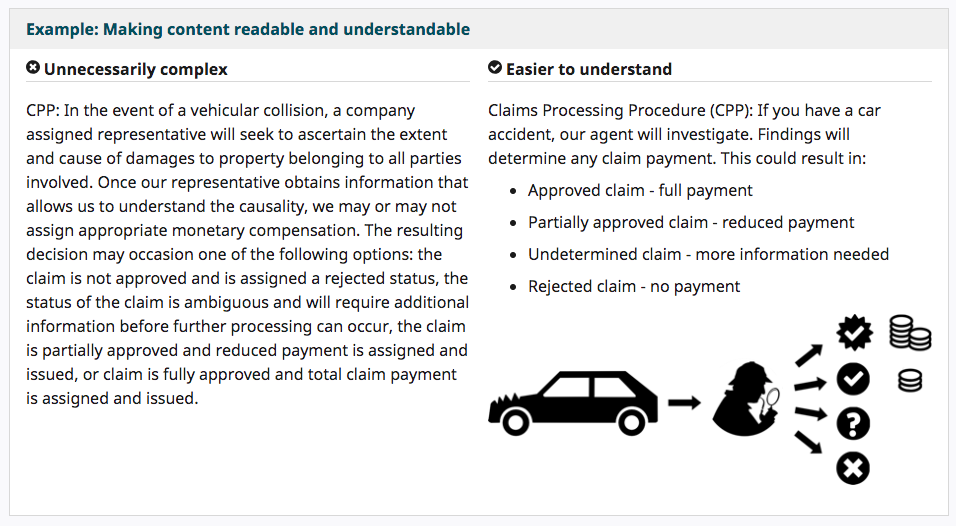When writing for the web, keep it clear and easy for a general audience to understand. This is especially important when you write instructions, help text, or error messages.
Example of instructions that communicates what information the user should provide:

Link text should not be ambiguous ("Click here" or "Read more") but should describe the action a user should take and the content of the link target.
To reiterate what W3C recommends, we suggest that when you write for your website that you:
- Write in short, clear sentences and paragraphs.
- Avoid using unnecessarily complex words and phrases. Consider providing a glossary for terms readers may not know.
- Expand acronyms on first use. For example, Every Person University (EPU).
- Consider providing a glossary for terms readers may not know.
- Use list formatting as appropriate.
- Consider using images, illustrations, video, audio, and symbols to help clarify meaning.

Image credits: W3C